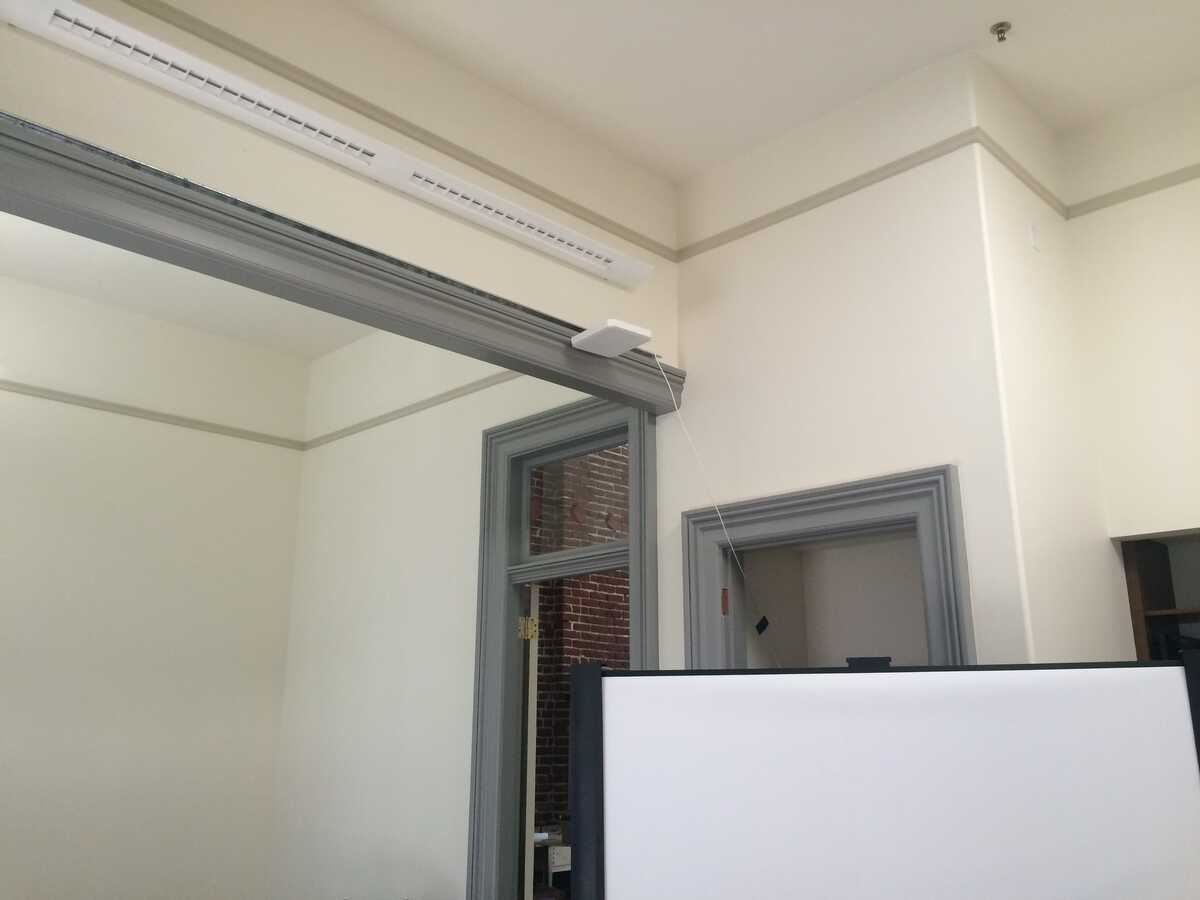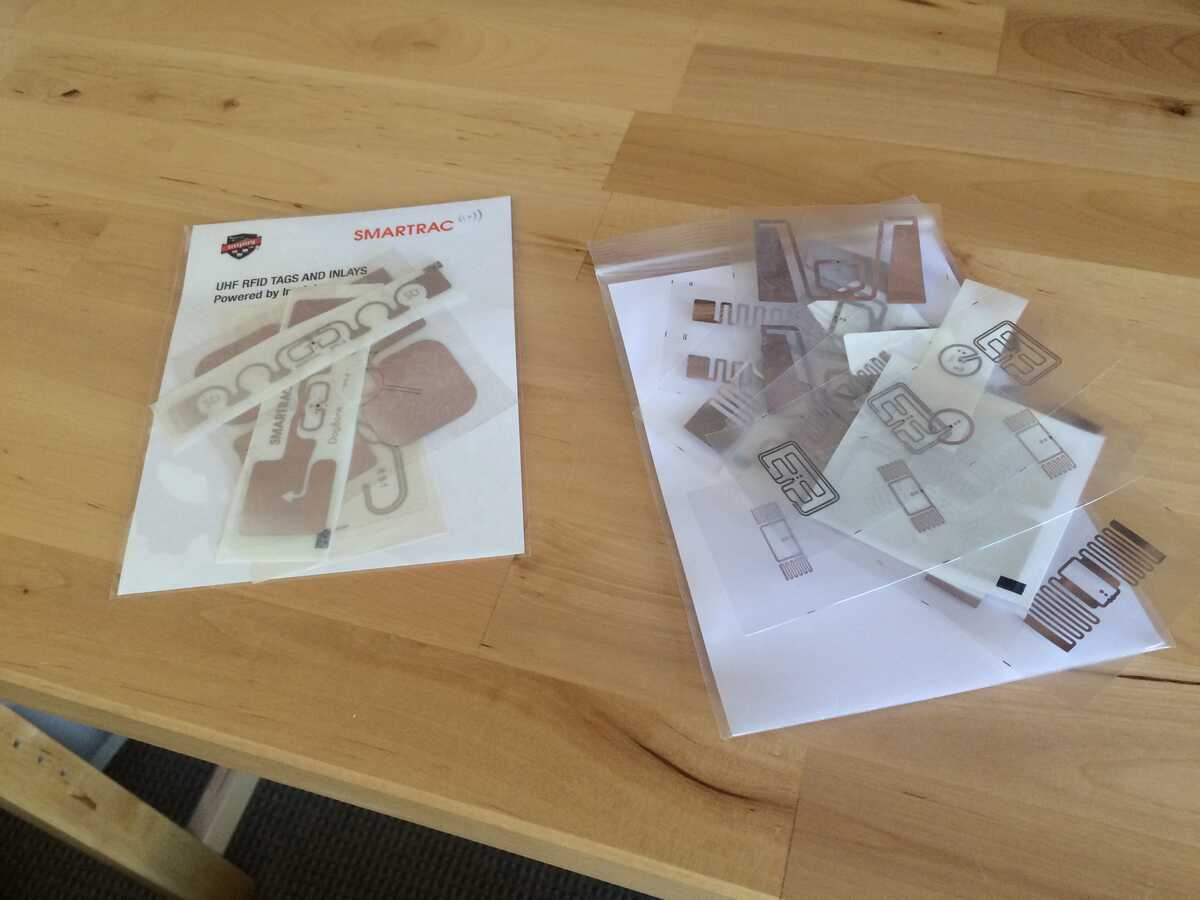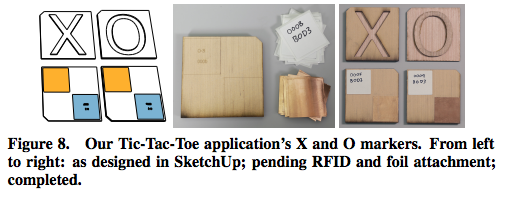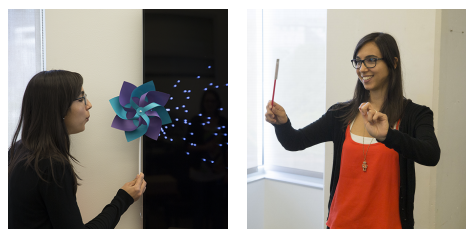There is now a microservice streaming data over a web socket from the UHF RFID reader.
The antenna is installed in the corner of the main space,

It can read these UHF tags (not to be confused with NFC tags) if they are within ~20 feet of the antenna,

These tags are in the corner room (far enough away that they aren't accidentally read by the reader).
I documented why UHF RFID is interesting in this email. In particular, by looking at the phase data, we can see when a tag is moving. Since the tag gives us identity, we now know what, which complements the where of the retroreflective system. That is, we correlate the movement of a tag with movement of retroreflective dots, telling us what object is where.
There are other very interesting applications of UHF RFID. Please take a look at these videos to see if they inspire any ideas for applications: RapID, PaperID.
In RapID, they take advantage of the fact that metal will interfere with a tag read. They strategically place tags and conductive foil on game pieces and then based on when tags are read or not read are able to infer, for example, that a specific game piece was placed on a specific slot.

The same strategy can be used to create sliders and rotary encoders out of everyday materials.

In PaperID, they use phase information to determine the movements of paper objects (like I'm proposing we do),

They also have this clever trick where they make RFID tags with only half an antenna. When a person touches the tag, their body provides enough capacitance to complete the antenna and thus triggers a read.

Here are some open questions that I encourage others to look into if they are interested:
- We need a better way to visualize the output of the reader. My line graph to plot movement was pretty crude. Ideally this visualization should be displayed near the antenna, so that we can wave tags around, etc. and see what the sensor picks up. This is necessary for all below.
- We need to test different tag types. I have a sample pack with a zillion different ones. The small ones (smaller than ~2in) don't seem to work well, but I haven't tested systematically. We should find one or two types we like and order a couple hundred to get started on applications.
- We need to understand the range of the reader. Also, the reader currently is powered via ethernet, but I think it might give a stronger signal (and more frequent reads) if it is also plugged into the wall. We should try this.
- We need to understand interference patterns. Moving your hand next to a tag will change the phase reading. Can we mitigate this or take advantage of this? Also nearby metal will stop reads.
- We need to understand how many tags can be reliably read at once. The papers seem to suggest that tags in the 10s is not a problem, and people on warehouse forums talk about reading hundreds (though their application is probably way different).
- What are other possibilities? Can we replicate the "half antenna" of PaperSense? Is there a way to construct a binder that "knows" what page it is on using only cleverly placed tags and conductive foil? Would it be worthwhile to put RFID stickers on our books and have the coffee table track them? Etc.